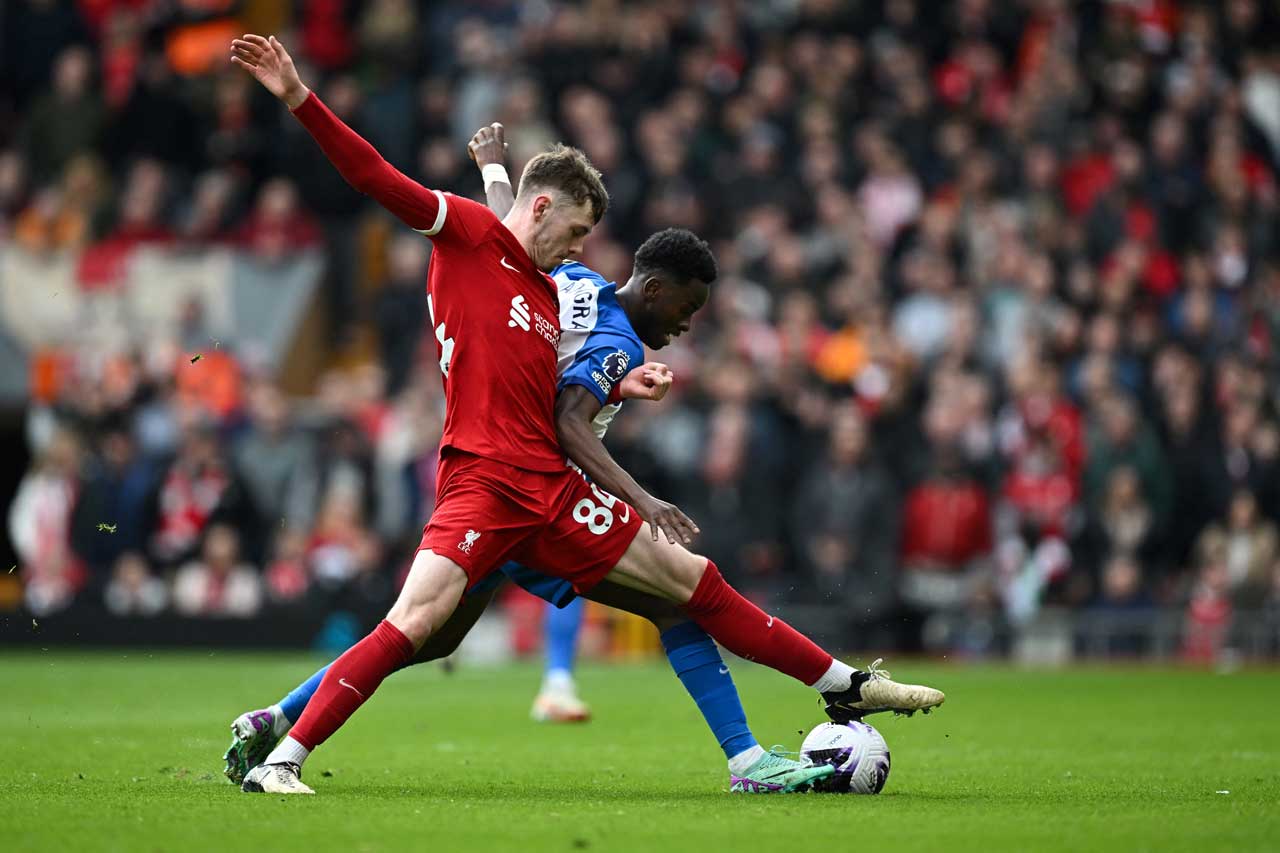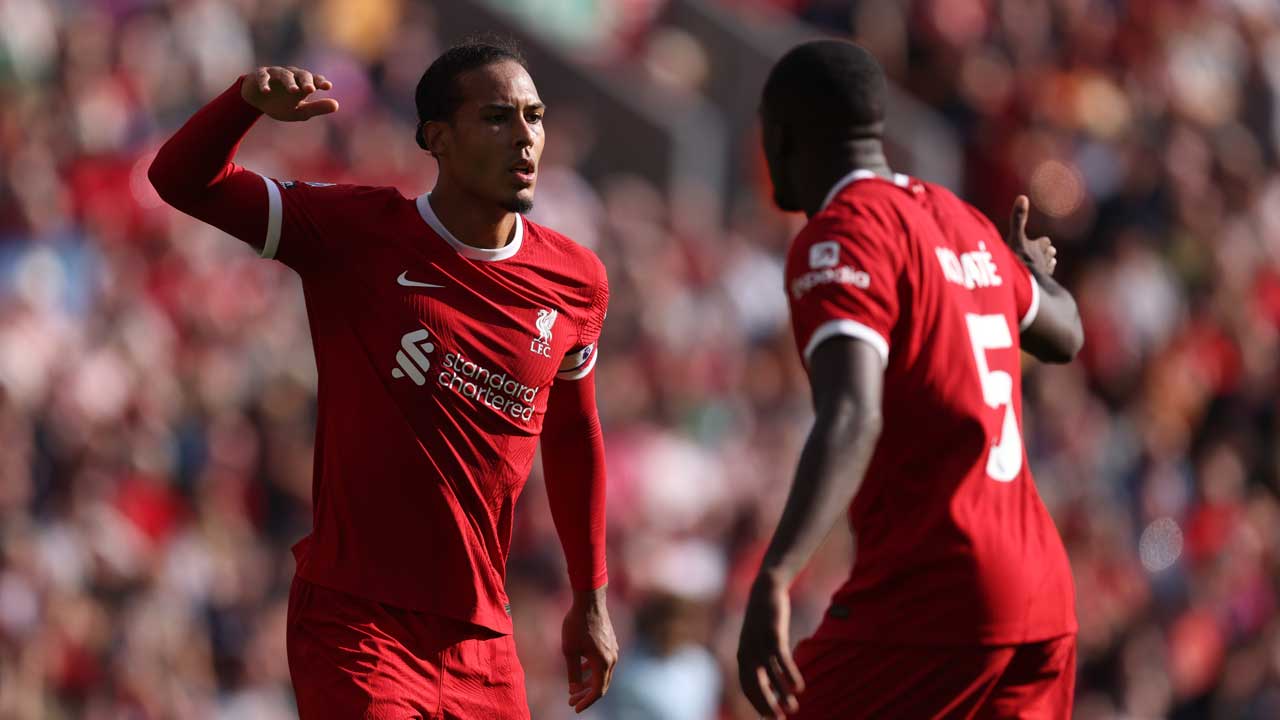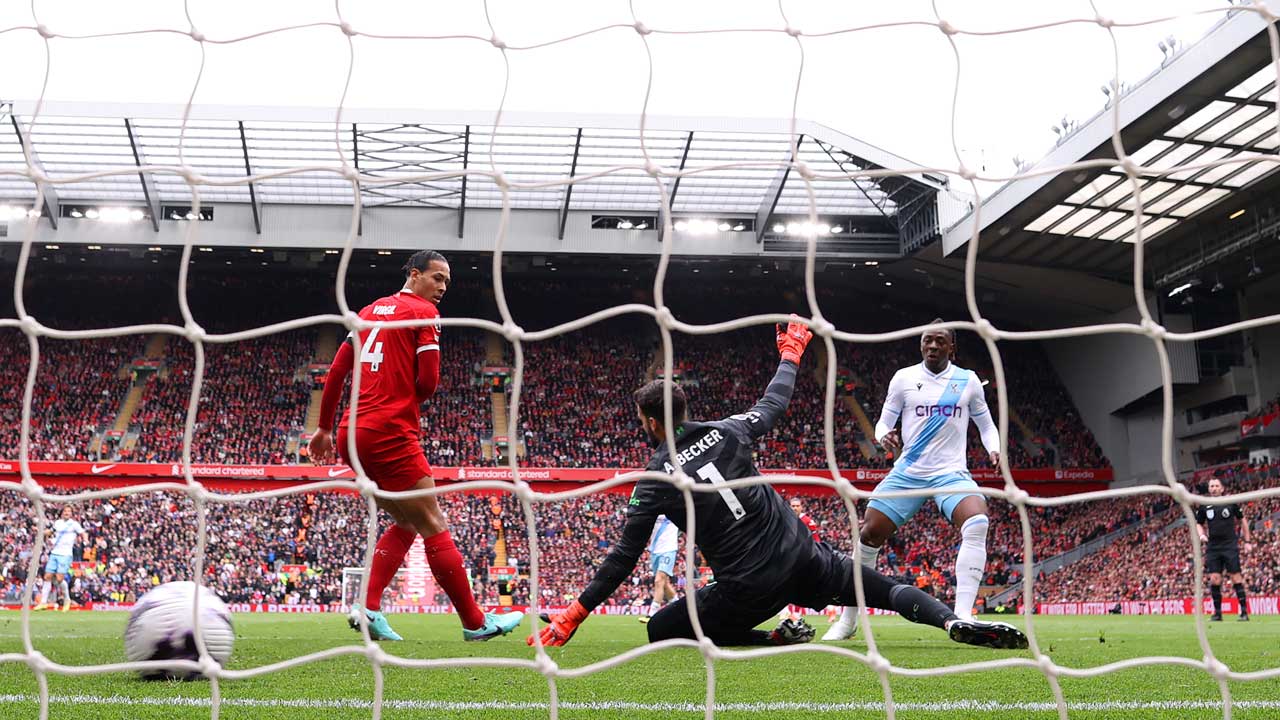Formed by Hammers supporters Jack Elderton and Callum Goodall to offer their fellow fans in-depth but accessible analysis of their team and its players, Analytics United use performance analysis and data to examine how West Ham United can get the better of Jürgen Klopp’s Liverpool...
Sitting second at the time of writing, Liverpool remain in a three-way Premier League title race with Manchester City and Arsenal. The Reds have turned things around after a disappointing fifth-place finish last season and could be in with a chance of securing a 20th top-flight championship if they can produce a perfect record over the last four weeks. It would be their second Premier League title but crucially, the first that they would be able to properly celebrate with their fans after breaking their decades-long drought in the 2019/20 COVID lockdown season.
If they were to win it, it would also represent a fitting farewell to one of Liverpool’s greatest managers. Jürgen Klopp, who announced he would be standing down at the end of the season back in January, has done an outstanding job at Anfield. One of Liverpool’s greatest strengths has always been the power of the united voices of Anfield rising together against all comers and Klopp, with his ‘heavy metal football’ built on German Gegenpressing, has brought this back in stunning style.
Most Premier League fans will be more than familiar with that style by now. It’s had a huge impact on the league and we have seen other managers like Ralph Hasenhüttl, who cried when his Southampton side beat Liverpool 1-0 in January 2021, try and implement similar approaches, while Pep Guardiola also utilises intense counter-pressing to ensure that his side maintains possession-dominance.

But what is counter-pressing? When a team loses possession, the defensive transition begins and the defending side is faced with two main options (with plenty of subcategories that inform all of the different styles we see today): Press to win it back or recover into the defensive shape and protect the goal. Klopp’s Liverpool opt for the first option and do so with zeal.
This strategy can be hugely rewarding in both its production of high turnovers and opportunities to exploit disorganised opposition defences – which can be found in their wider build-up shapes rather than their more compact defensive shapes – and its natural allowance of greater possession dominance and thus, greater control. We see this evidenced in Liverpool’s 347 high turnovers this season, the most in the Premier League, and average PPDA of 8.06, the lowest in the division.
The main weakness of an intense counter-pressing approach is a potential susceptibility to counter-attacks as the team pushes forward aggressively to try to win the ball back immediately after losing it. This can be mitigated by total commitment to the press, the players must have the reactions hard-wired into their mindset on the pitch and act with unbreakable focus and intensity at the point of turnover at all times, and by having physically impressive centre-backs to cover the spaces wide and in behind when the ball does get through. In Ibrahima Konaté and Virgil van Dijk, Liverpool certainly have that.

In fact, since a 1-3 loss to Arsenal in the first week of February, Atalanta, Crystal Palace and Everton – on Wednesday evening – are the only teams to have beaten Liverpool over 90 minutes of football. Curiously, both Atalanta and Palace use back-five systems and both Gian Piero Gasperini and Oliver Glasner are known for implementing intense counter-pressing approaches themselves. When Glasner led Eintracht Frankfurt to the 2022 UEFA Europa League title, his side caused huge problems for most oppositions through the intense pressure coming from his wide centre-backs, who used their physical profiles to win turnovers and launch dangerous counter-attacks.
There were marked differences in how the two teams went about their business at Anfield this year though. Where Gasperini’s Atalanta pressed relentlessly man-to-man across the pitch, Glasner’s Palace were a little more circumspect and happier to drop into a 5-4-1 low-block shape and limit the spaces around the box for Liverpool. Given that West Ham currently have the second highest PPDA (15.61) in the Premier League and therefore the second least intense press in the division, we can perhaps take more from Palace’s example ahead of today’s match.
Much like many Hammers games this season, Palace conceded plenty of shots (21) in their 1-0 win at Anfield but they intended to limit the quality of those chances whilst generating better opportunities themselves on the break. And Glasner’s side were able to make three top quality chances at the other end, two of which came from counter-attacks and set-pieces.

One of the major benefits of the back five system is the security in rest defence (the shape of the defensive players whilst in possession) as there will always be three across the back to protect against counter-attacks – situations that Liverpool are particularly dangerous from with the dynamism of their front three. And the five also allows for easier circulation in possession to negate Liverpool’s high intensity press as there is always that extra player sitting at the base to play through, buying a half-second away from the ferocity of the press and protecting against concession of high turnovers.
This makes five-at-the-back an enticing option, especially with Konstantinos Mavropanos and Nayef Aguerd both recently suffering knocks and being doubts ahead of the game, but David Moyes might opt to look at the first half at Anfield back in September for an example of how well the standard 4-2-3-1 shape can work whilst adding the flexibility to drop into a five when defending the final third.
His side were able to cause huge problems at the start of that game using Michail Antonio’s direct carrying ability on the left and Vladímir Coufal’s aggressiveness on the right to generate presentable crossing opportunities that really should have led to at least one goal. The shape also worked well defensively to begin with as Lucas Paquetá dropped from the left wing into a left-wing-back position with Emerson filtering inside and Antonio drifting out to the left. This made it more difficult to apply pressure to the ball-carrier but did a good job of protecting the box and presented wide dynamic outlets in Antonio and Jarrod Bowen on the break.
Whatever Moyes opts for, West Ham will have to be at their very best to deny Liverpool the win they need to stay in the title race and give his side a shot of qualifying for Europe for the fourth successive season.
*The views and opinions expressed in this article are those of Analytics United and do not necessarily reflect the views and opinions of West Ham United.

